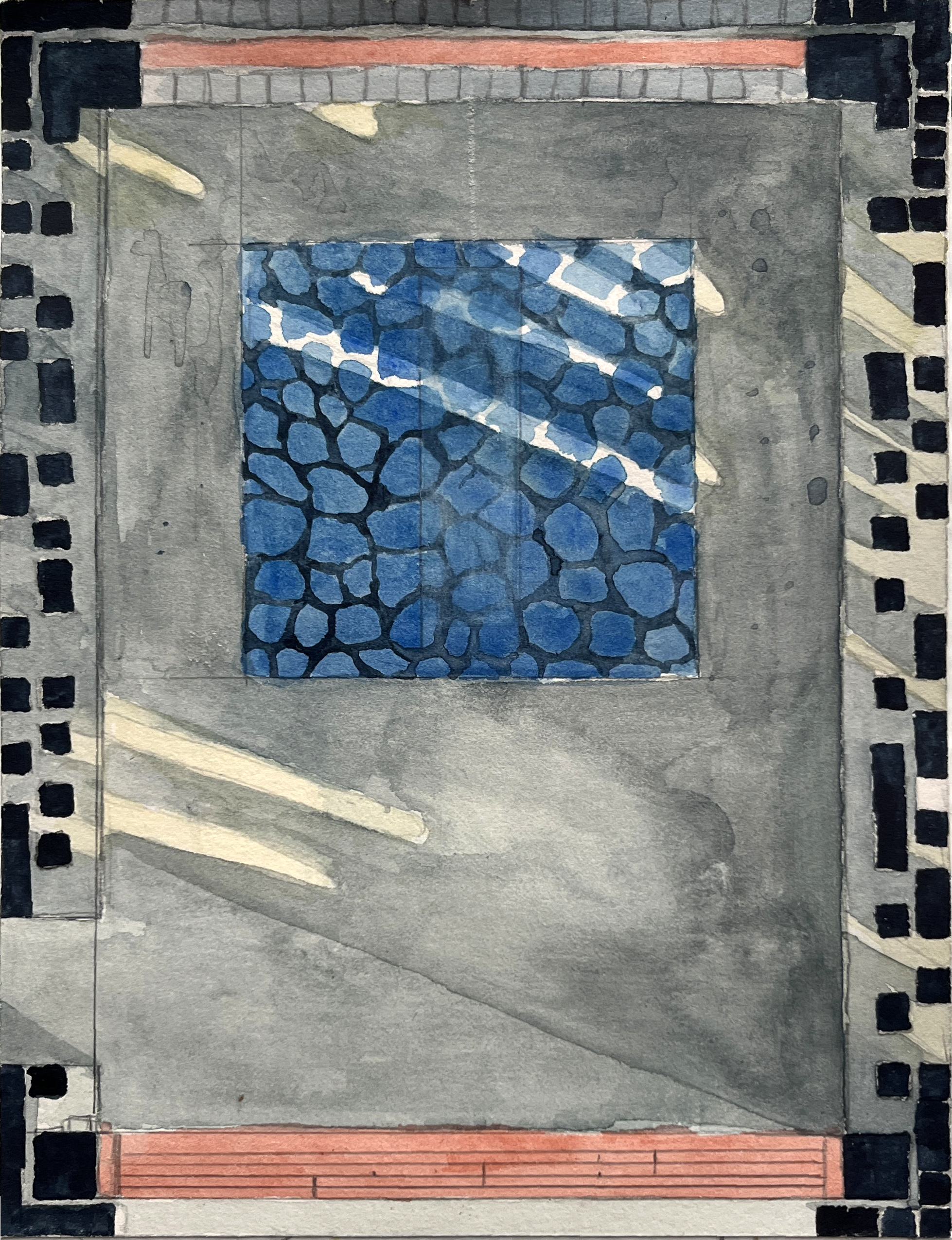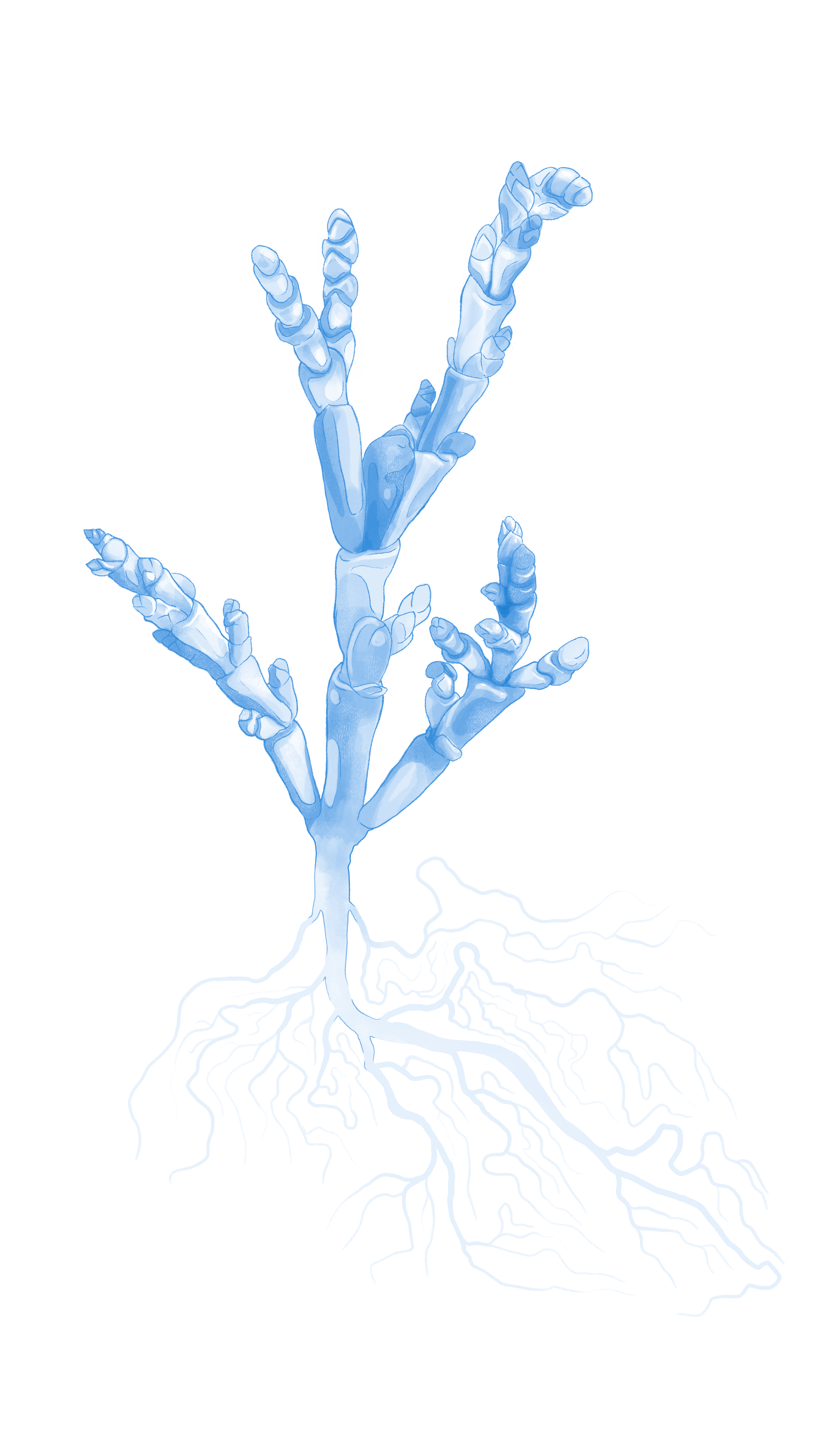02 DESERTED LIVELINESS, MATERIALISMS, AND FUTURES OF THE GSL WATERSHED
︎︎





Great Salt Lake Photography ︎︎︎
01/24 — 06/24.
AIA Utah
Student Design Award - Honor
ARCC King Student Medal - Architectural & Environmental Design Research
Architectural Research Centers Consortium
AIA Utah
Student Design Award - Honor
ARCC King Student Medal - Architectural & Environmental Design Research
Architectural Research Centers Consortium
My final studio project works in multiples to activate scales: three study models, a zine, the earthwork and chapel all work to make my home along the Wasatch Front precious. This project is about water and deserts. It is about drift, the recession of our lake, and how our conception of the desert as a void and the colonial production of toxicity has led to the crisis we face.
In addition to three study models, the logic of my project bifurcates into two outcomes which I call the Archive and the Architecture. The archive is an informal set of speculative design proposals collected in a zine. This work aims to document how I understand this place at this time and detect a way to stay with the trouble and respond to my home through art and design. The architecture uses the logic of chapels, catacombs, cemeteries, and memorials.
In addition to three study models, the logic of my project bifurcates into two outcomes which I call the Archive and the Architecture. The archive is an informal set of speculative design proposals collected in a zine. This work aims to document how I understand this place at this time and detect a way to stay with the trouble and respond to my home through art and design. The architecture uses the logic of chapels, catacombs, cemeteries, and memorials.
CHAPEL
my project again bifurcates into two components: a small chapel-like structure and a large abstract earthwork
Located in Farmington Bay near the Eccles Wildlife Center, the project offers an altered way to view and appreciate landscape. Using the logic of chapels through a secular lense, this project uses mass, material, light, landscape, and symmetry to cultivate reverence and aesthetic experience. This project seeks to make this place precious.

Confluence
The site of the architecture is a place of confluence. In Farmington Bay near the Eccles Wildlife center, this site captures views of the Great Salt Lake landscape, but also the highway and urban and suburban sprawl of grey and white homes of the same format all organized in a line. This site is full of mud flats, salt grass, pickle weeds, and great blue herons, but it also captures views of bellows from smokestacks, a water tower, and an LDS church. It is backed closely by the Wasatch Mountains, collapsing the scales in the flow of water from the mountains through the city and to the lake. There is a precession of water, a precession of visitors. Utlimately this site brings all these varied subjects close. Although I admire the Eccles Wildlife centers architecture and program, the structure and reserve embody a specific view of land and recreation: which is largely consumptive usage such as hunting and even roosts are constructed for birdwatchers. 

Parti
(above) This is a two-part parti: an illustration and geometric sketch. The illustration depicts the basins of the western United states like nesting bowls. The overlaid sketch’s narrowing geometric form represents diversions from the watershed from snow-packed mountains through cities and out to the lake and west deserts. The geometry is both physical and temporal, about water and our narrowing future. We are at a point near collapse after a century of misuse. We will learn much about the future of our watershed in the next few years, and we peer through a narrowing sliver.





Materials (3)
The site of the architecture is a place of confluence. In Farmington Bay near the Eccles Wildlife center, this site captures views of the Great Salt Lake landscape, but also the highway and urban and suburban sprawl of grey and white homes of the same format all organized in a line. This site is full of mud flats, salt grass, pickle weeds, and great blue herons, but it also captures views of bellows from smokestacks, a water tower, and an LDS church. It is backed closely by the Wasatch Mountains, collapsing the scales in the flow of water from the mountains through the city and to the lake. There is a precession of water, a precession of visitors. Utlimately this site brings all these varied subjects close. Although I admire the Eccles Wildlife centers architecture and program, the structure and reserve embody a specific view of land and recreation: which is largely consumptive usage such as hunting and even roosts are constructed for birdwatchers

︎︎︎Layer 3

︎︎︎Layer 1
 ︎︎︎ Layer 0
︎︎︎ Layer 0 
1 Earthwork - Rock & Gabion
For the earthwork, I searched for a building method that could retain earth while being earnest about its materiality. I didn’t want to cover the construction with a surface treatment and hide the nature of the structure. After some searching I considered concrete and megalithic stone, but ultimately landed on gabion.
Gabion was originally a retaining structure, which is how I use it in the earthwork componenet of my project. Three layers of gabion constructed on-site would hold back the earth from the conical cavity. On the last layer, the metal mesh can be pulledbackaway from the ‘floor’.


1. Promitory Point Warf
2. Promitory Point Wood Piles
2 Chapel - Wood
The chapel is constructed from salt-preserved wood sourced from piles of salvaged material at Promitory Point. This material is massive, approximated for this project as an 8x8. The mass is used in two ways: as hermetic walls with openings on the SW and NE, and as perforated screen sitting beyond a glass curtain on the remaining walls. The mass material is sheared against the grain at the openings, revealing radial textures. The construction of the original wharfs the material was used for is echoed in the robust metal rods that bind the mass together.





3 Interior - Clay
This project proposes the commission of a desccated clay sculpture from local artist Stone Anderson. The desiccated sculpture acts as a seating platform and a radiant heat surface. The platform is the only conditioning of the space.



Stone Anderson︎︎︎
Salt Lake City Ceramic Artist
Final Drawings







Final Model







ARCHIVE
a set of informal speculative proposals collected into a zine. this work documents how I understand this place at this time, and detects ways to stay with the trouble and respond to my home through art and design.
This study model is a glossary inspired by Robert Macfarlanes’ Landmarks in which he writes about the power of place language. He says, “Once they go unnamed they go to some degree unseen. Language deficit leads to attention deficit.” This glossary seeks to reenchant the land, and collecting the language is a type of research.
The Zine︎



















MODEL 1
Glossaryplace language is a powerful way we understand landscapes: developing specific, sensitive language helps us to see what is there.
This study model is a glossary inspired by Robert Macfarlanes’ Landmarks in which he writes about the power of place language. He says, “Once they go unnamed they go to some degree unseen. Language deficit leads to attention deficit.” This glossary seeks to reenchant the land, and collecting the language is a type of research.
Glossary︎















MODEL 2
Driftdrift is a world shaper, this model is about change, movement, and dispersal.
In the endorheic basin we live within, every drop of water has a relationship to the Great Salt Lake. Until diverted, water drifts towards heart center at Great Salt Lake, carrying with it a material history of sediment, chemicals, etc
Drift︎


MODEL 3
Hermthe harshness of the environment shrinks scales in the spectrum of living and non-living things.
The deserts, ephemeral streams, and pink water become lively - plants and creatures become stony. The distance between living and non-living things shrinks. This sculpture is inert mineral, but takes on an active liveliness from radial composition, symmetry, and voids: all derived from the Great Salt Lake bioherms which blur the line between organic and inorganic.
Herm︎











